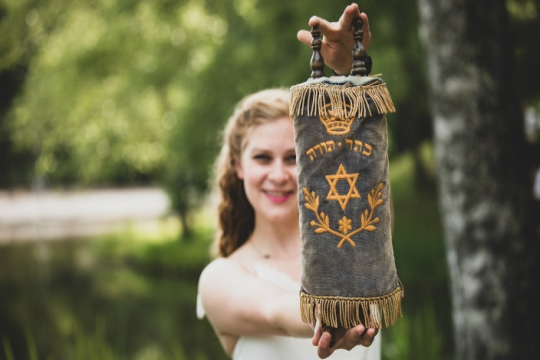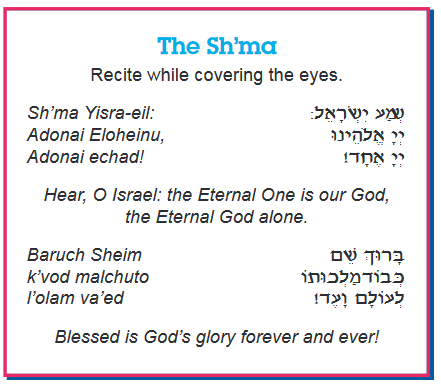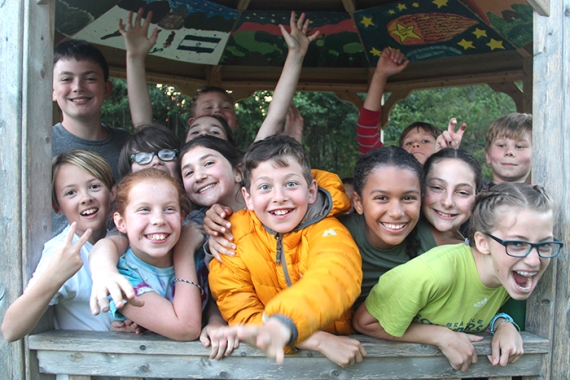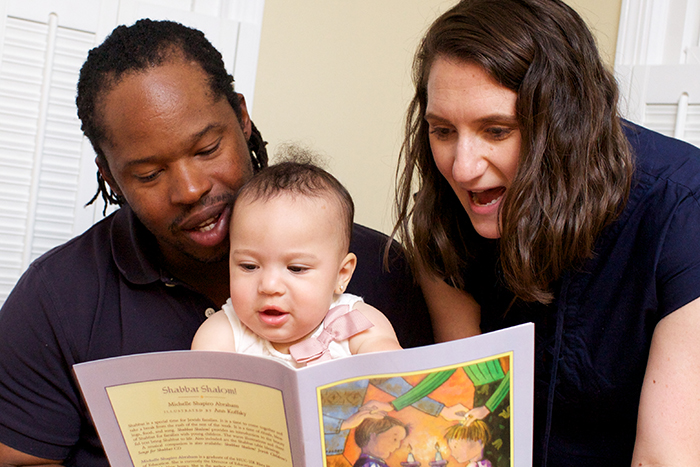
The Sh’ma has been the Jewish declaration of faith for thousands of years. Jews everywhere in the world say the Sh’ma, especially in the morning and at night, to remind us that life is a gift from God. It is our personal and communal expression of belief in God and in the unity of the Jewish people, as well as our recognition that there is a relationship between God and the Jewish people. The Sh’ma is between the parent and God, the parent and his or her child, and the child and God. It is an expression of belief and affection. Feel free to express love for your child as you express love for God through actions as well as words.
What works best for each parent and child is a guide to creating a personalized Jewish ritual. Transforming bedtime into Jewish time may provide children with an understanding that being Jewish is a way of life and a constant source of comfort. Download and print the prayer and these rituals.
Model 1
Step 1—Let your child select a limited number of his or her favorite books.
Step 2—Sit close to your child or with him or her on your lap; read the stories in a soft, dramatic, engaging voice.
Step 3—Have a brief discussion about the books—why your child choses a particular book, what he or she liked best about it, which character peaked his or her interest.
Step 4—Sit next to each other on the bed, cover your eyes and sing the Sh’ma together.
Step 5—Tuck your child under the covers; exchange goodnight hugs and kisses.
Model 2
Step 1—After reading a few books together, start the nightly ritual.
Step 2—Reflect on the day—what went well, what was challenging, what you learned. Think about tomorrow—what activities are scheduled, to what you are looking forward,
what will be challenging, what strategy you will use to cope with challenges.
Step 3—Breathe deeply and blow out all the stress and tension so your bodies can rest and rejuvenate.
Step 4—Sit next to each other on the bed, cover your eyes and sing the Sh’ma together.
Step 5—Tuck your child under the covers; exchange goodnight hugs and kisses.
Model 3
Step 1—Have a brief discussion about the day—what you liked, what you didn’t like; share something you did that was helpful to someone or contributed to making the world a better place.
Step 2—Ask your child to select a special person to whom he or she would like to say hello and goodnight. Grandma? Grandpa? Aunt Becky? Uncle Louie? Call that person on the telephone; write a message and draw a picture to send in the mail; or e-mail a special love message (with content dictated by the child to the parent).
Step 3—Review and validate the effort of reaching out to someone else with love and kindness.
Step 4— Sit next to each other on the bed, cover your eyes and sing the Sh’ma together.
Step 5— Tuck your child under the covers; exchange goodnight hugs and kisses.
Model 4
Step 1— Let your child choose two or three CDs or tapes of Jewish music.
Step 2— Listen and sing along with one song.
Step 3— Pause the music occasionally to talk about the words, the song’s meaning, what it might have to do with each of our lives.
Step 4— Sit next to each other on the bed, cover your eyes and sing the Sh’ma together.
Step 5— Turn on the CD or tape again at a low volume for your child to listen to as he or she falls off to sleep; exchange goodnight hugs and kisses.
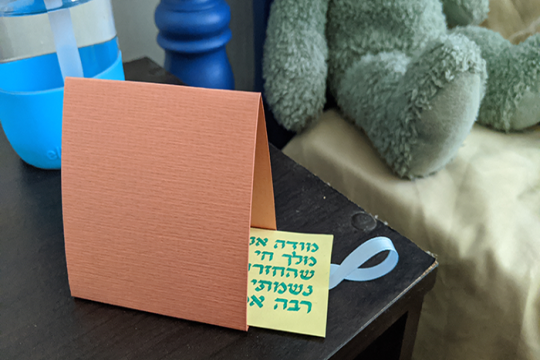
Family Activity for Bedtime: Prayer Tents

Crafting Jewish Tradition for Young Children: Morning Rituals
